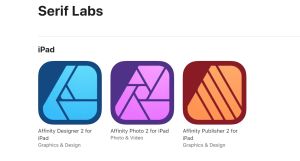 Spotlight: Flyoobe, a Windows 11 installation customization tool
Spotlight: Flyoobe, a Windows 11 installation customization tool
Windows 10 is no longer supported by Microsoft outside the Extended Security Updates program. It’s been quite a ride for this version during the last few months: in the middle of 2025, when the news of Win 10 discontinuation supposedly reached every user out there, it still held about half of the market. People did not want to migrate to Windows 11. Nowadays, the latest OS has the lead, and to a certain extent, it is backed by third-party tools that let you customize the system quite flexibly, getting rid of anything unneeded. We’ve covered some tools of this sort in a couple of overview posts: “Moving to Windows 11: image customization tools” and “Moving to Windows 11: post-installation customization tools.”
This piece focuses on Flyoobe, arguably the most user-friendly and versatile open-source tool built for the purpose.
What is Flyoobe?
Flyoobe started out as Flyby11, a utility made to help install Windows 11 on PCs deemed unsupported. It still does that, too, allowing users to bypass limitations like TPM 2.0 and Secure Boot checks, but the set of the tool’s features has been extended greatly over the years of its existence.
How does Flyoobe work?
Here is a step-by-step guide describing how to use Flyoobe and what the tool can do for you.
1. Download and launch Flyoobe
This is the first step: get the latest version of Flyoobe from the official GitHub repository. The app is portable; you just launch it after downloading. No installation required.
Flyoobe gives you two basic options: you can either upgrade to Windows 11 or make a clean installation of the system. If your computer doesn’t meet the Win 11 requirements — lacks support for TPM 2.0 or Secure Boot — you don’t have to worry: the tool steps over these limitations automatically.
2. Get the official Windows ISO and select the version you want
Flyoobe is integrated with Microsoft-approved download scripts like Fido PowerShell; they fetch unmodified Windows ISOs directly from the company’s servers. Thus, you always get a safe and authentic OS.
Version-wise, you can choose:
- the build (e.g., 23H2, Insider, or Retail);
- the edition (Home, Pro, Education, etc.);
- and the architecture (x64 or ARM).
3. Tweak the Out-of-Box-Experience (OOBE)
Before the installation, Flyoobe lets you customize your Windows. Take some time to think and choose wisely. You can:
- select your region, keyboard, and privacy settings;
- decide whether to proceed with a local account or log into your Microsoft account (can malfunction, Microsoft’s closing these loopholes);
- choose default apps, AI features, diagnostic tools, and assorted telemetry to enable or remove;
- set the preferred theme, wallpaper, and position the taskbar as you like;
- pause, disable, or manage the update routine through the built-in Windows Update Tamer.
The adjustments take effect before the system gets into its OOBE, so the customizations are active from the very first boot.
4. Debloat the system
This is an optional step, but obviously a feature that makes all the difference to the moderately advanced Windows users out there. The debloat manager included in Flyoobe lets you remove or keep pretty much every default Microsoft Store app and system feature. For your convenience — this is recommended for most of us — the tool suggests predefined removal presets, from Minimal to Full clean.
5. Add scripts
This one is for shamelessly advanced users: Flyoobe allows adding custom PowerShell scripts and commanding the system to install extra apps, rename the device, set policies, apply some registry tweaks, etc., all done during the installation.
That’s it! Proceed with your Windows 11 installation.
Post-installation maintenance
Flyoobe can also clean house and streamline the system somewhat once it’s up and running. The respective functionality is in the Extensions section; the utility can:
- remove leftover installation folders (read: Windows.old);
- get rid of whatever temporary files there may be;
- tell File Explorer to show hidden files, etc.;
- show the telemetry shared and the background tasks as they are.
Migration to Windows 11 is a question of “when”, not “if”; in case you’re still uncertain about the move, consider making it with the help of Flyoobe, the arguably most popular Win 11 installation customization tool.



